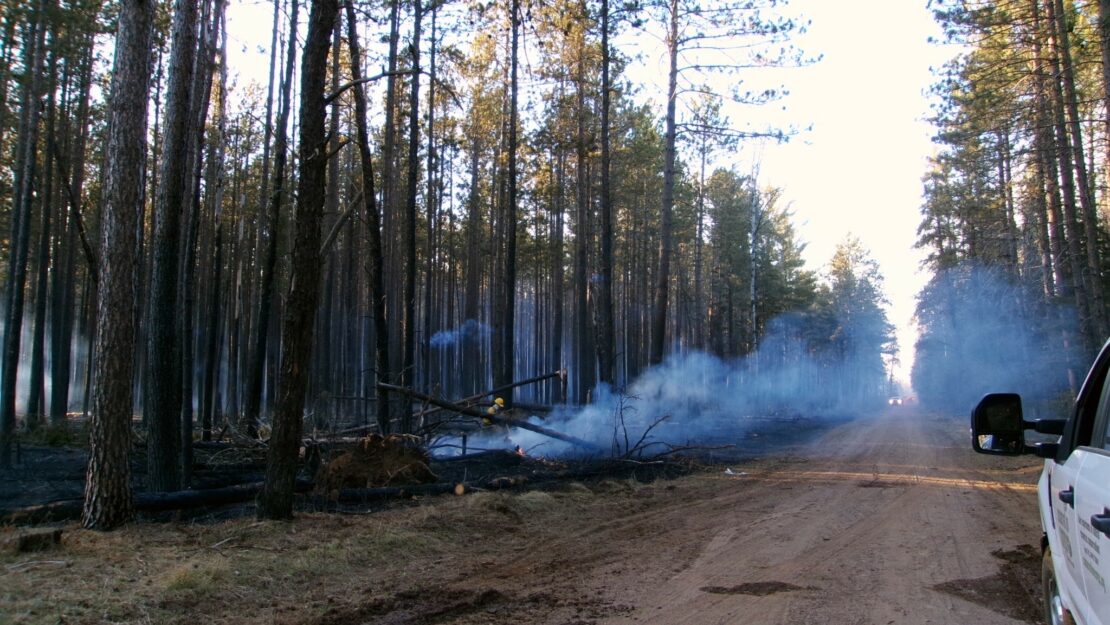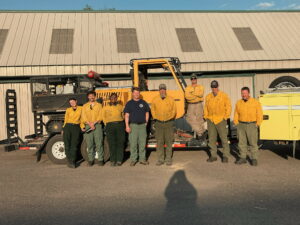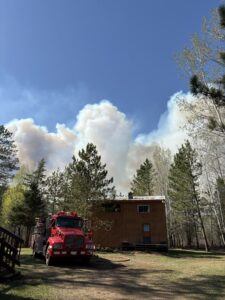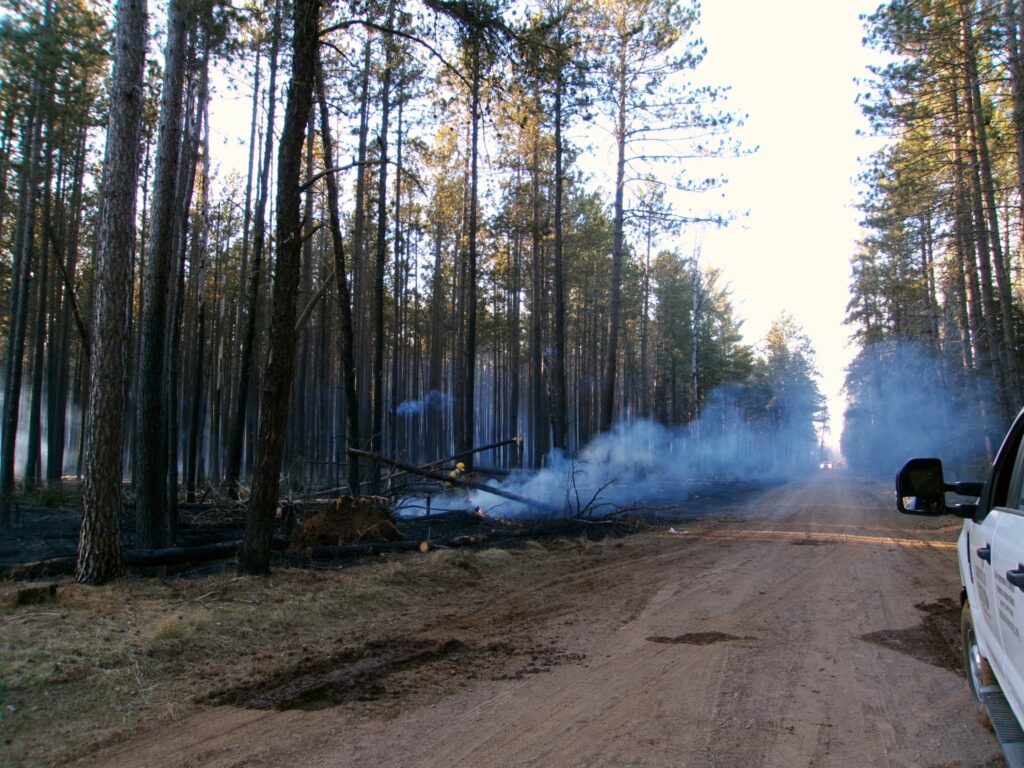The Excitement and Anxieties of Fire Deployment

By Joana Rose, Aquifer Field Crew Member / AmeriCorps Member
On Friday May 9th, my CCMI crew was placed on call for fire response. 77 Minnesota counties were given a “Red Flag Warning” because the predicted weather and relative humidity could result in high fire activity. Basically anything from a burning brush pile to a discarded cigarette had the possibility of exploding into a large wildfire.
Once on call, crews must be packed and ready for 14-day deployment. The couple of crews that had already been on fire response were gone for no more than a couple of days. We weren’t expecting much. I planned for my long-distance girlfriend to visit me that weekend before I knew I’d be on call. I figured that if we did get deployed, we might be home that same evening.
On Saturday morning, we were deployed. I scrambled to get ready and got on the road. I had to say goodbye to my girlfriend. I was anxious. My brain was flooded with questions: Where are we going? What will we be doing? Am I ready for this? Am I capable?

We were sent to the fire office in Aitkin, Minnesota – a two-ish hour drive from St. Paul. When we finally arrived and got out of our truck, the day felt unbearably hot. The air felt heavy and dry. The 77 Red Flag Warnings made a lot of sense. Our assignment was simple: “hurry up and wait.” We were extra hands in case anything happened. For the next 48 hours, we spent our days at the station listening for radio commands and our nights at a local motel. Our time in Aitkin wasn’t action-packed, but it was valuable all the same. We heard stories from professionals with decades of experience, and we were primed for the next part of our deployment: On our third day, we were called to the Camp House Fire near Brimson, MN. It was 700 acres and increasing.

We quickly realized that what we thought would be a 3-5 day deployment was going to be much more. And it was: we worked the Camp House fire for 10 days. We saw huge smoke plumes and saw trees on fire from trunk to canopy. We worked with out of state Hot Shot Crews and local structure firefighters. We saw National Guard Helicopters dropping buckets of water as the fire grew to 12,000 acres. But most of what we did each 12 hour day was something called “mop up.” Where the fire had already burned, we hunted for any remaining hot spots. Our job was to make sure no fire started again and moved into areas where it could become problematic. It was meticulous and sometimes tedious work. We talked to local homeowners whose houses we patrolled, and their gratitude was motivating when we felt exhausted and homesick. On May 22nd, the Incident Command decided that the fire was under control enough for us to go home. It felt like the end of summer camp. We became friends with a South District CCMI crew that we worked with every day, and we had gotten used to the routine. But we were exhausted, and we were ready to sleep in our own beds.
I never imagined in a million years that I could be a wildland firefighter, even as I sat in the classroom during training camp, even as we drove to Aitkin on May 10th. I’m not a thrillseeker. I’m not a weightlifter. I’ve honestly never been very athletic at all. I’m just a 22-year-old animal lover with a passion for the outdoors. Somehow I did it though, and I’m impressed with myself. I learned a million things during those 12 days, but the most valuable thing I learned was that I am much more capable than I ever imagined.
